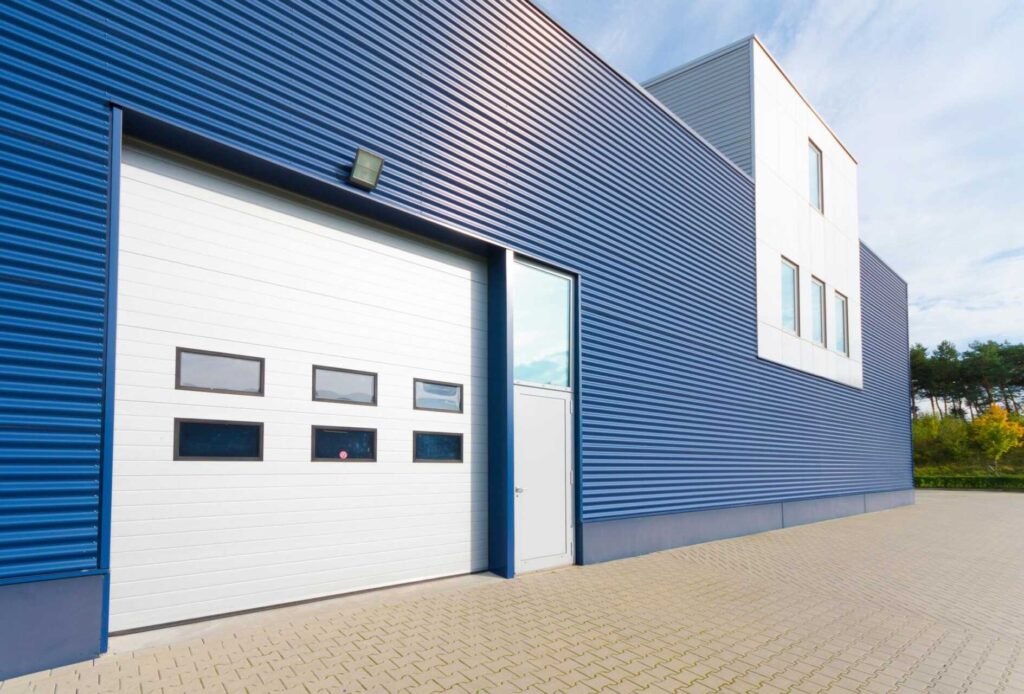
Contents
When it comes to optimizing energy efficiency in metal buildings, you might be surprised at the impact small changes can make. From simple lighting upgrades to advanced control systems, there’s a multitude of strategies to explore. By focusing on key areas like insulation, roofing, and HVAC systems, you can make substantial progress in lowering energy costs and enhancing sustainability. So, if you’re looking to streamline your building’s energy usage and reduce environmental impact, these practical tips and techniques are worth considering.
Key Takeaways
- Use LED fixtures and skylights for energy-efficient lighting.
- Insulate with spray foam or fiberglass for high R-values.
- Reflective roof coatings and proper ventilation help reduce cooling costs.
- Optimize HVAC systems with zoning and regular maintenance.
- Renewable energy sources like solar panels should be considered for sustainability.
Energy-Efficient Lighting Solutions
Energy-saving lighting solutions play a pivotal role in optimizing energy consumption and reducing operational costs in metal buildings. When considering lighting options for your metal building, investing in LED fixtures is a wise choice. LED fixtures aren’t just energy-saving but also have a longer lifespan, reducing maintenance costs. By replacing traditional lighting with LED fixtures, you can greatly decrease your energy usage and lower utility bills.
Another effective lighting solution for metal buildings is skylight installation. Skylights allow natural light to enter the building, reducing the need for artificial lighting during the day. This saves energy and creates a more comfortable and inviting indoor environment. Skylights can be strategically placed to maximize natural light distribution, enhancing the overall aesthetics of the space while promoting energy efficiency.
Incorporating LED fixtures and skylights in your metal building not just reduces energy consumption but also positively impacts the environment by lowering carbon emissions. Additionally, these lighting solutions contribute to creating a sustainable and cost-effective building that aligns with modern energy efficiency standards.
Insulation Techniques for Savings
When it comes to insulating your metal building for energy efficiency, knowing the types of insulation available, installation tips, and cost-effective solutions can make a significant impact.
Understanding the benefits and drawbacks of materials like fiberglass, spray foam, or reflective insulation is important for making informed decisions.
Proper installation techniques and selecting the most suitable insulation type can lead to long-term savings on energy bills.
Types of Insulation
Selecting the appropriate insulation material is essential for maximizing energy savings in metal buildings. When it comes to insulation types, two popular options are spray foam and fiberglass. Here’s a breakdown of each to help you make an informed decision:
Spray Foam Insulation:
- Provides excellent air sealing, reducing energy loss.
- Offers high R-values, ensuring the best thermal efficiency.
- Expands to fill gaps and crevices, enhancing coverage.
- Acts as a vapor barrier, preventing moisture buildup.
Fiberglass Insulation:
- Cost-effective and widely available.
- Easy to install, making it a popular choice for DIY projects.
- Good for soundproofing in addition to thermal insulation.
- It can be layered for increased insulation in colder climates.
Whether you opt for the versatility of spray foam or the affordability of fiberglass, choosing the right insulation can have a significant impact on your building’s energy efficiency and comfort levels.
Installation Tips
Consider these strategic installation tips to improve energy savings and enhance the efficiency of your metal building’s insulation. When it comes to foundation preparation, ensuring the base is level and free of moisture is crucial to prevent heat loss. Opt for energy-efficient siding options like insulated metal panels or cool metal roofing to further enhance thermal performance. Sealing techniques play a vital role in preventing air leakage; use caulking and weatherstripping around windows, doors, and other openings to create a tight seal. Incorporating sustainable construction materials such as recycled insulation or cellulose fibers can reduce your environmental impact and improve the insulation efficiency of your metal building.
| Installation Tips | Description |
|---|---|
| Foundation Preparation | Ensure a level, moisture-free base for optimal insulation |
| Energy Efficient Siding | Choose insulated metal panels or cool metal roofing |
| Sealing Techniques | Utilize caulking and weatherstripping for a tight seal |
| Sustainable Materials | Opt for recycled insulation or cellulose fibers |
Cost-Effective Solutions
Implementing cost-effective insulation techniques is crucial for maximizing energy savings and efficiency in metal buildings. Proper insulation decreases energy consumption and enhances the comfort of the building’s occupants.
Here are some practical and cost-effective solutions to explore:
Reflective Roof Coatings: Applying reflective coatings to the roof can greatly decrease heat absorption, lower cooling costs, and increase energy efficiency.
Spray Foam Insulation: This type of insulation provides an effective air barrier, preventing energy loss through leaks and drafts, thereby reducing heating and cooling expenses.
Weather Stripping: Ensuring that doors and windows are properly sealed with weather stripping helps maintain a consistent indoor temperature, reducing the workload on heating and cooling systems.
Insulation Upgrades: Conducting regular energy audits to identify areas with insufficient insulation and upgrading them can result in significant energy savings over time.
Roofing Innovations for Cooling
When it comes to cooling your metal building efficiently, consider incorporating reflective roof coatings that help minimize heat absorption.
Ventilation solutions play an important role in maintaining a comfortable indoor temperature by promoting airflow and reducing heat buildup.
Additionally, opting for cool roof materials can greatly decrease the amount of heat transferred into the building, leading to energy savings and enhanced comfort.
Reflective Roof Coatings
Reflective roof coatings play a crucial role in enhancing the energy efficiency of metal buildings by reducing heat absorption and lowering cooling costs. These coatings are a key component in creating a more eco-friendly and energy-efficient structure.
Here’s why you should consider incorporating reflective roof coatings:
Heat Reflection: By deflecting sunlight away from the building, these coatings help maintain lower indoor temperatures, reducing the need for excessive cooling.
Energy Savings: With decreased heat absorption, your building’s cooling systems won’t have to work as intensely, leading to significant energy savings in the long run.
Eco-friendly Coatings: Choosing eco-friendly coatings not just benefits the environment but also aligns with the growing trend towards sustainable practices in construction.
Enhanced Thermal Performance: Reflective coatings improve the building’s overall thermal performance, ensuring a comfortable indoor environment while keeping energy costs in check.
Considering these benefits, investing in reflective roof coatings can be a practical and efficient way to enhance energy efficiency in metal buildings.
Ventilation Solutions
Exploring innovative ventilation solutions for cooling can be a strategic approach to further enhancing the energy efficiency of metal buildings, particularly in conjunction with reflective roof coatings. Proper ventilation design and efficient air circulation are key factors in maintaining a comfortable indoor environment while reducing energy consumption. Utilizing energy-saving fans and exhaust systems can greatly improve the overall cooling process within the building.
| Ventilation Solutions | Benefits |
|---|---|
| Energy-Saving Fans | Reduce energy costs while enhancing air circulation. |
| Exhaust Systems | Improve indoor air quality by expelling stale air and moisture. |
| Smart Ventilation Design | Enhance cooling efficiency and maintain a comfortable environment. |
| Natural Ventilation Options | Apply passive cooling techniques to decrease the need for mechanical systems. |
Cool Roof Materials
Incorporating contemporary cool roof materials in metal building construction can improve energy efficiency by decreasing heat absorption and lowering indoor temperatures. When contemplating cool roof materials, look for options that reflect sunlight and emit absorbed heat effectively.
Here are four key aspects to take into account:
Reflectivity: Opt for cool roof materials with high solar reflectance to bounce off sunlight and reduce heat buildup.
Emissivity: Choose materials that have high thermal emissivity, allowing them to release heat efficiently.
Durability: Select resilient, cool roof materials that can withstand harsh weather conditions and maintain their reflective properties over time.
Compatibility: Make sure the cool roof materials chosen are compatible with other energy-efficient features like solar panels and skylight installations for a cohesive and effective energy-saving system.
Windows and Daylighting Strategies
Maximizing natural light through strategic window placement and daylighting techniques is vital for enhancing energy efficiency in metal buildings. Skylights offer numerous benefits, such as increased natural light penetration and reduced reliance on artificial lighting during the day.
When considering window placement, focus on the building’s orientation and the path of the sun throughout the day. South-facing windows allow for more sunlight to enter during the winter months, helping to naturally heat the building. Consider using shading devices like overhangs or louvers to prevent overheating in the summer.
Daylighting strategies play an essential role in reducing energy consumption. By utilizing reflective surfaces like white walls or light-colored flooring, you can enhance the distribution of natural light within the space. Additionally, installing light shelves above windows can bounce sunlight deeper into the room, reducing the need for additional lighting.
When selecting windows, opt for energy-efficient glazing that minimizes heat transfer. Low-emissivity coatings and insulated frames can greatly improve thermal performance. Remember to seal any gaps or cracks around windows to prevent air leakage, further enhancing the building’s overall energy efficiency.
HVAC System Optimization Tips
Enhance the energy efficiency of your metal building by optimizing the HVAC system with strategic adjustments and maintenance practices. To achieve this, consider the following tips:
Filter Maintenance: Regularly clean and replace air filters in your HVAC system. Clogged filters restrict airflow, making the system work harder and consume more energy.
System Zoning: Implement zoning in your HVAC system to control the temperature in different areas of your metal building separately. This allows for more efficient heating and cooling by only conditioning the spaces that need it.
Duct Sealing: Inspect and seal any leaks in the ductwork to prevent air loss. Leaky ducts can decrease the system’s efficiency by forcing it to work harder to maintain the desired temperature.
Thermostat Programming: Utilize programmable thermostats to adjust the temperature based on occupancy patterns. Programming the thermostat to lower heating or cooling when the building is unoccupied can lead to substantial energy savings.
Renewable Energy Integration
To integrate renewable energy effectively into your metal building’s energy system, evaluate the suitability of solar panels or wind turbines based on your location and energy needs. Solar panels are a popular choice for harnessing energy from the sun. They’re best suited for regions with abundant sunlight throughout the year. Consider factors like shading from nearby buildings or trees that could impact the panel’s exposure to sunlight.
On the other hand, wind turbines are ideal for locations with consistent wind patterns. Before installing a wind turbine, assess the average wind speed in your area to confirm it’s adequate to generate power effectively.
When deciding between solar panels and wind turbines, consider your energy requirements. Solar panels are excellent for buildings with high energy consumption during daylight hours, while wind turbines can be more beneficial if your energy needs are higher during the night or in breezy conditions.
Conducting a thorough cost-benefit analysis to determine the most suitable renewable energy option for your metal building is important. Take into consideration the initial installation costs, maintenance requirements, as well as potential savings on energy bills in the long term.
Building Envelope Enhancements
Consider including reflective roofing materials to enhance the energy efficiency of your metal building’s envelope. Reflective roofing can aid in decreasing heat gain, lowering cooling expenses in warmer climates.
Here are some practical steps to improve your building’s envelope and boost energy efficiency:
Address Thermal Bridging: Thermal bridging occurs when there’s a break in the insulation layer, allowing heat to transfer more easily. Insulating metal purlins and girts can help reduce thermal bridging and enhance overall energy efficiency.
Implement Air Sealing: Proper air sealing is essential in preventing air leakage, which can result in energy loss. Seal gaps and cracks around doors, windows, and entry points to maintain a tight building envelope.
Opt for High-Performance Windows: Upgrading to energy-efficient windows with low U-values can significantly decrease heat transfer and improve insulation, enhancing the overall energy efficiency of your metal building.
Enhance Insulation: Adding additional insulation in the walls and roof can help maintain a consistent indoor temperature, reduce the workload on heating and cooling systems, and further enhance energy efficiency in your metal building.
Smart Controls and Automation
Implementing intelligent controls and automation systems can significantly enhance energy usage and improve operational efficiency in your metal building. By integrating energy monitoring tools into your building’s infrastructure, you can gain valuable insights into how energy is being consumed and identify areas for enhancement.
These systems allow you to track energy usage in real time, set energy consumption targets, and receive alerts if there are any deviations from the set parameters.
Automation systems play a vital role in regulating energy consumption by controlling lighting, heating, ventilation, and air conditioning systems based on occupancy levels and time schedules. For example, sensors can detect when a room is unoccupied and automatically adjust the temperature or lighting to conserve energy.
Additionally, automation systems can be programmed to enhance energy usage during peak and off-peak hours, further reducing overall energy costs.
Monitoring and Maintenance Practices
Effective monitoring and maintenance practices are essential for optimizing the best energy efficiency and performance in metal buildings. By implementing the following strategies, you can maximize your building’s energy efficiency and longevity:
Regular Energy Audits: Conducting routine energy audits allows you to identify areas of energy wastage and inefficiency. By understanding your building’s energy consumption patterns, you can make targeted improvements to enhance efficiency.
Scheduled Equipment Maintenance: Regularly maintaining HVAC systems, lighting fixtures, insulation, and other equipment ensures they operate at peak efficiency. Preventive maintenance reduces the risk of breakdowns, prolongs equipment life, and enhances energy usage.
Data Monitoring and Analysis: Utilize energy monitoring systems to track real-time energy usage data. Analyzing this data can help you identify trends, set performance benchmarks, and make informed decisions to improve energy efficiency.
Continuous Improvement: Establish a culture of continuous improvement by engaging building occupants and maintenance staff in energy-saving initiatives. Regular training sessions and feedback mechanisms can foster a sense of ownership and promote sustainable energy practices.
Review
Maximizing energy efficiency in metal buildings necessitates a strategic approach that combines cutting-edge lighting solutions, insulation techniques, roofing advancements, and smart controls.
Incorporating these methods can decrease energy usage and cut down on operational expenses in the long term.
Remember, energy efficiency is akin to a well-functioning machine – each part works together smoothly to attain peak performance and savings.
Continue to implement these strategies to maintain the efficient and sustainable operation of your metal building.
Recent Posts
What Are Affordable Metal Garage Options for Farms?
Imagine you’re managing a bustling farm like Smith’s Acres, where every inch of space counts.
What Are Your Options for Agricultural Metal Storage?
When you’re exploring agricultural metal storage options, it’s crucial to take into account the various
How to Choose Versatile Agricultural Metal Structures
When you’re considering versatile agricultural metal structures, it’s essential to start by evaluating your specific




